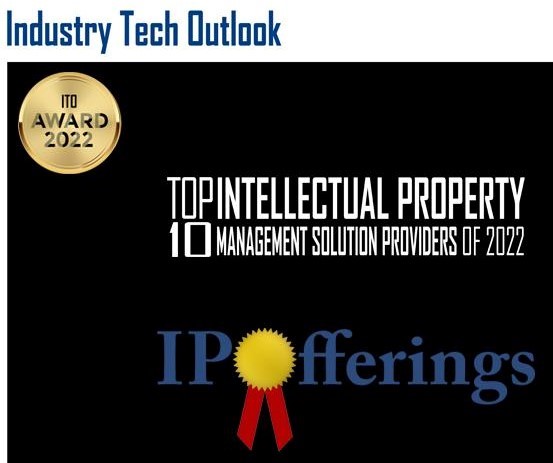Patent MarketPlace: Consumer Products Patents and Trademarks for Sale
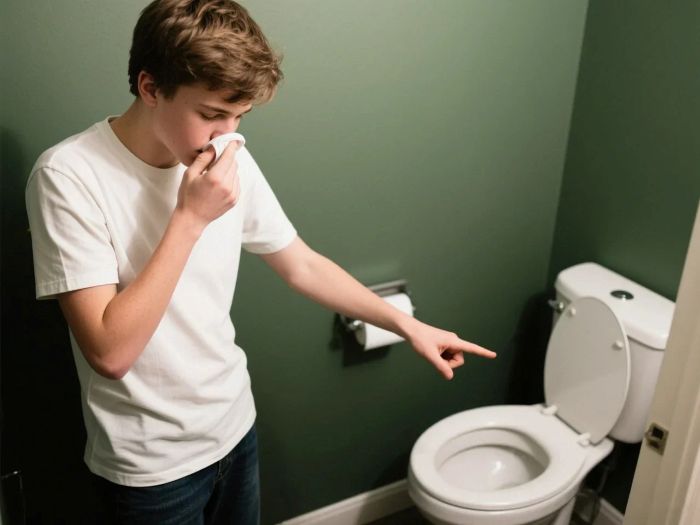 Air-Filtering Toilet Seat (Suiter): U.S. Patent No. 11,166,606
Air-Filtering Toilet Seat (Suiter): U.S. Patent No. 11,166,606
There is no nice way to say this. There are few more nasty and uncomfortable situations that walking into a bathroom or rest room in which the previous user dropped a No. 2 and left the place stinking! Yuck! The situation is equally as nasty at home or at school or at the office, at a store or restaurant, or at someone else’s home. Since the invention of the flush toilet in 1592, nothing has been done about the smell other than turn on the exhaust fan, open the window, or use air freshener spray, none of which are always an option and none of which are really very effective!
This patent creates the first toilet seat that directly addresses the smelly No. 2 problem. The truly next-generation toilet seat created by this patent has a sensor that automatically turns on a vacuum that draws air through apertures and through a carbon filter, removing the smell, any airborne bacteria, and scents in the air before exiting the air out the back of the toilet seat. When the next person enters to use the toilet, whatever unpleasant smell left by the previous user is gone. The device is battery operated and it recharges with a magnetic inductive charger, so no wiring is needed. The carbon filter has an element that is periodically changed to maintain its effectiveness Yes! A smell-free bathroom or rest room!
U.S. Patent No. 11,166,606 for an “Odor removing toilet seat” will enable any toilet seat manufacturer to introduce a totally new product that will be a major advancement in Western Civilization!
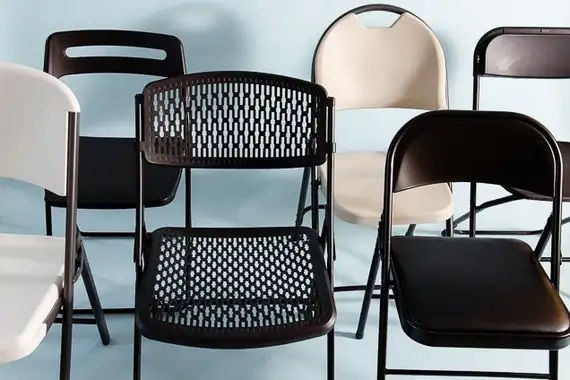 Cushion for Folding Metal Chairs (Kemnitzer/Powell): U.S. Patent No. 11,974,675
Cushion for Folding Metal Chairs (Kemnitzer/Powell): U.S. Patent No. 11,974,675
Is there anything less comfortable than a folding metal chair? How many times have each of us shown up for an event only to learn that we will have to sit on a metal folding chair? Folding metal chairs are durable. They are convenient. They are affordable. But they are NOT comfortable!
This patent fixes the folding metal chair problem. It creates a contoured cushion that goes between the hard metal seat of the chair and the occupant’s bottom, and it attaches to the chair so it stays in place. The seating surface is higher at the rear than the front edge, mitigating the downward slope of metal folding chairs. Combined with that elevated rear portion of the seat surface, it creates a unique and subtle “S” shaped curve that encourages the user’s pelvis to assume an anterior tilt which opens the diaphragm, increasing air intake (critical for exercising and playing wind instruments) and reduces fatigue. The “waterfall” front edge of the pad is curved downward and terminates at a point lower that the rear top edge. This feature greatly reduces compression of the thighs and popliteal area, virtually eliminating leg cramps and numbness. The seat cushion created by this patent is not just comfortable, but super comfortable! The chair can be folded up with the cushion attached and put into storage, and then taken out when needed and unfolded to create a very comfortable chair. The cushion can be removed in seconds to be washed when needed.
U.S. Patent No. 11,974,675 for a “Seating assembly” will enable any chair or cushion manufacture to provide a never-before-available level of comfort to folding metal chair occupants.
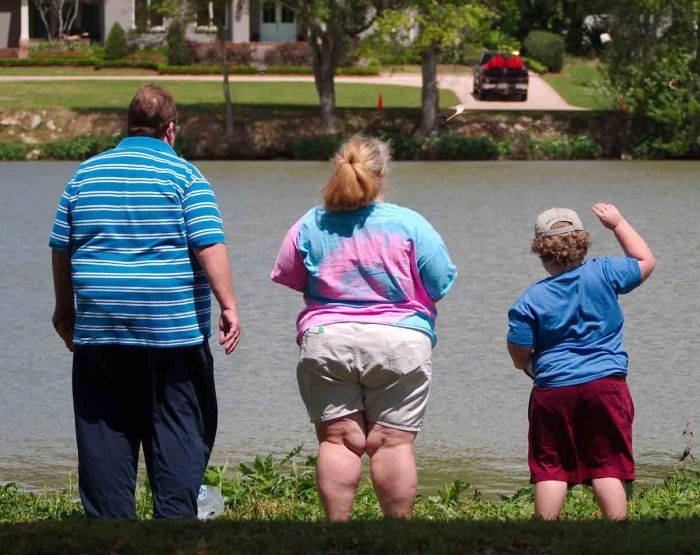 Personalized Portion Control Diet Regimen (Yangergy): Two U.S. Patents and Continuation
Personalized Portion Control Diet Regimen (Yangergy): Two U.S. Patents and Continuation
Obesity is a widespread problem in the U.S. and most First World countries. Of special concern is obesity among children, as it can lead to a lifetime of health problems and societal costs. There are thousands of weight-loss schemes, diets, medicines, routines, and products, yet the rate of obesity continues to increase. All these methods are one-size-fits-all. None provide a feasible, customized solution, and most are not suitable for children or teens.
Weight loss comes from eating less, and that is what this invention does. This patent family offers the first practical and easily implementable solution to obesity for an entire family. It assigns a simple integer-based system to volumetric portion and bite size. Once a dish, plate, cup, glass, spoon, or fork is sized to this method, a number can be assigned to each item. A plate is just a plate, but a measured plate with this method and an assigned number becomes a weight management tool. The portion adjustment between sizes is indiscernible, so the user can gradually and incrementally adjust sizes without feeling deprived while focusing on improving the nutritional value of his or her meals.
The amount of food consumed is controlled by selecting the size of the plate, bowl, cup, etc. The size of the fork or spoon helps control how quickly the food is eaten. The system defines a set of dinnerware in which each plate, bowl, cup, etc., is one of a range of sizes, and each is labeled for that size. It also includes utensils in a range of sizes. A person can now optimize his or her weight by adjusting the size of his or her portions in small increments without deprivation, at a pace that is right for that person. For example, a man may reduce portion size from 20 to 19, 19 to 18, and so on until the optimum weight is achieved, then maintain that weight by sticking to that size. A woman might start with size 16 and reduce to 15, 14, 13, and so on. Each family member, including children, will know his or her size and can easily follow it to lose and/or maintain a healthy lifestyle. The dinnerware set that uses this patented technology would include a booklet explaining how to use the system.
U.S. Patent No. 10,311,748 for an “Incrementally-sized dishware system and method of using same for weight management” and U.S. Patent No. 10,325,515 and Application 20140255884 for an “Incrementally-sized standard-sized eating-ware system for weight management” creates the opportunity for a dinnerware and/or flatware manufacturer to offer the first set of dishware and utensils that helps its users lose weight!
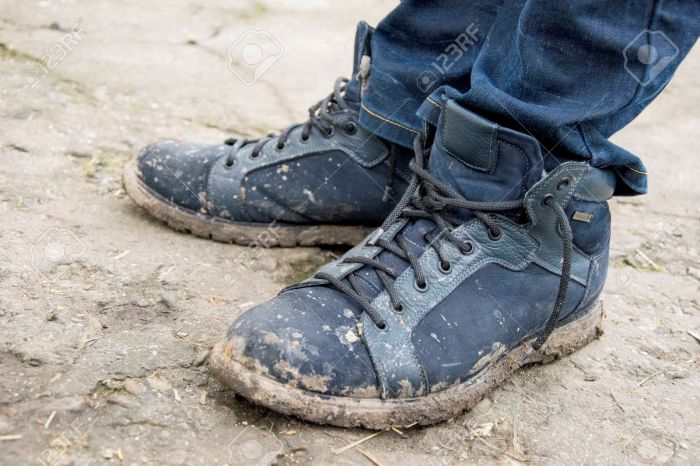 Shoe Disinfectant (Egan): U.S. Patent No. 11,642,003
Shoe Disinfectant (Egan): U.S. Patent No. 11,642,003
It has been a common practice in many cultures to remove one’s shoes when entering a home. The shoes are left near the entrance to the house, and the visitor puts them back on when he or she leaves. This practice makes a lot of sense. Who knows what dirt, grime, grease, oil, tar, feces, urine, germs, bacteria, or other unpleasantries are stuck to the bottom of those shoes? But in the U.S., it has been the practice to just walk into a home or office or school or physician’s office with who-knows-what stuck to the bottom of our shoes! In a post-Covid world, shouldn’t we be concerned about what dangerous substances are being dragged along with us on the bottom of our shoes?
This patent addresses this issue with a practical and affordable solution. It creates a device with two trays. The first tray includes a disinfectant into which a visitor steps. The shallow pool of disinfectant immediately kills any germs or bacteria on the bottom of the visitor’s shoes. The visitor then steps into a second tray that dries off the bottoms of the shoes. The visitor then steps out of the second tray and into the house, office, school, or other facility with a 90% reduction in germs on his or her shoes. In a matter of 20 to 30 seconds, the shoes of every visitor are sanitized, keeping untold germs out of the building. As the disinfectant is consumed, a reservoir replaces it in the first tray. In just a few seconds, the shoes of every visitor are sanitized, keeping untold possible infections out of the building! Nursing homes – where the residents are particularly susceptible to infections – are an excellent candidate for a device based on this patent as well as physician’s offices, clinics, hospitals, schools, and homes. Applications for a product based on this patent are endless.
U.S. Patent No. 11,642,003 for a “Disinfecting floor mat for cleaning the bottoms of shoes” will enable any healthcare or home accessories manufacturer to offer a practical and affordable product that will dramatically decrease the spread of infections.
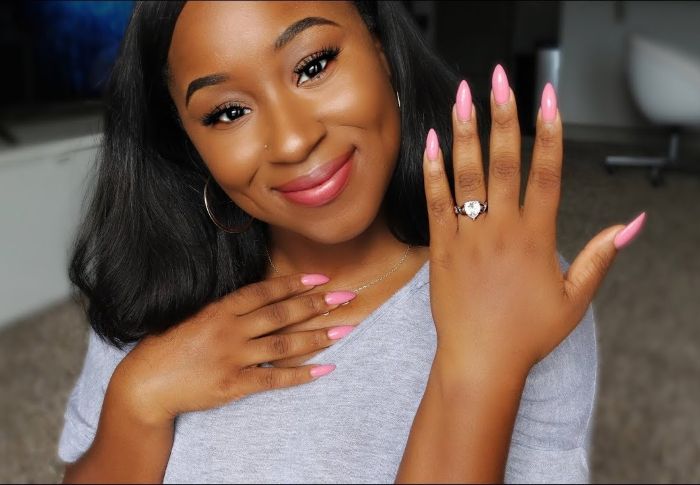 Illuminated Jewelry (Versi): U.S. Patent No. 11,333,795
Illuminated Jewelry (Versi): U.S. Patent No. 11,333,795
Archeologists have discovered jewelry worn by human beings as far back as 100,000 years ago. But until just the last hundred years or so, jewelry was worn exclusively by royalty and the very rich to set them apart from the commoners. Today, however, a large portion of the population wears jewelry, from a simple wedding ring to elaborate necklaces, anklets, wristlets, and tiaras. We love our jewelry. We wear it so everyone can see it. We lock up our most valuable items and we insure them against theft or loss. For rings especially, both the stones and the setting are carefully coordinated to optimize the appearance of the item.
This patent takes jewelry to the next level by illuminating the stone or stones. The patent includes a light source with a battery that is placed under a stone. The light source adds illumination to the stone, taking the appearance of the ring, necklace, or other item to a whole new level! The size and brightness of the light source can be selected to produce optimal illumination of the stone or stones in the piece. All the owner has to do is periodically return to his or her jeweler to replace the battery – just as one does to replace a watch battery.
U.S. Patent No. 11,337,495 for an “Electronic personal jewelry articles” would enable any jewelry manufacturer to leap frog the product offerings of all of its competitors and offer a line of jewelry that shines and shines!
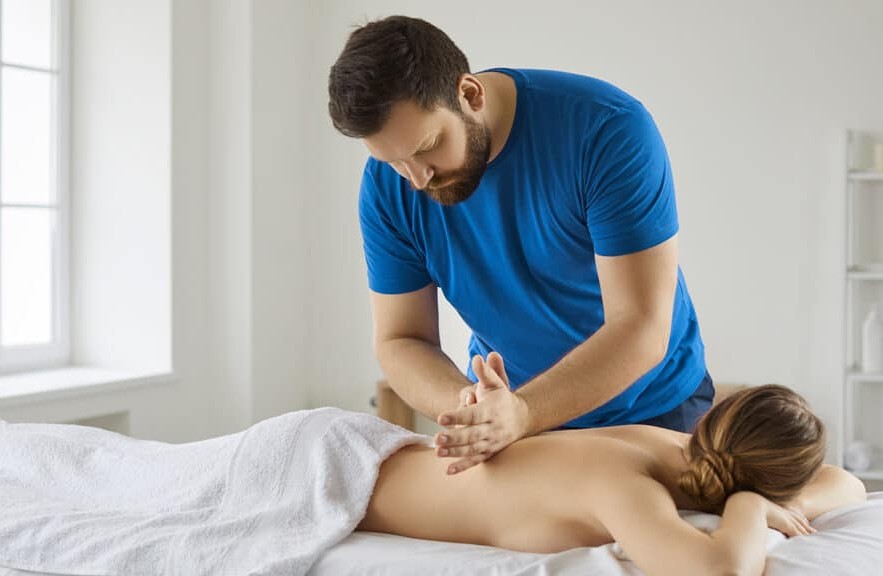 Self-Massage Machine (Hill): U.S. Patent No. 10,610,444
Self-Massage Machine (Hill): U.S. Patent No. 10,610,444
Massages are great! All you have to do is drive down to the massage parlor, wait for a massage therapist to be available, enjoy your massage, tip the massage therapist, pay for the massage, and drive back home. Or you can – if you can afford it – have the massage at home. That’s why there are over 300,000 licensed massage therapists in the U.S. and massage therapy is a $20 billion industry!
This patent creates an entirely new concept for delivering a massage. The patent includes a massage table with a massage machine attached to it that includes a variety of massage rollers. The massage recipient lies down on the table, and using a remote control panel he or she directs the massage machine to apply the massage rollers. The user controls which rollers are used, at what location, over what area, and at what pressure. The massage recipient receives a comprehensive massage perfectly suited to his or her needs, but with the cost of the massage therapist taken out of the formula
U.S. Patent No. 10,610,444 for a “Massage system” can be used to create a self-massage machine for high school, college, and professional athletes, gyms and fitness facilities, and residential use.
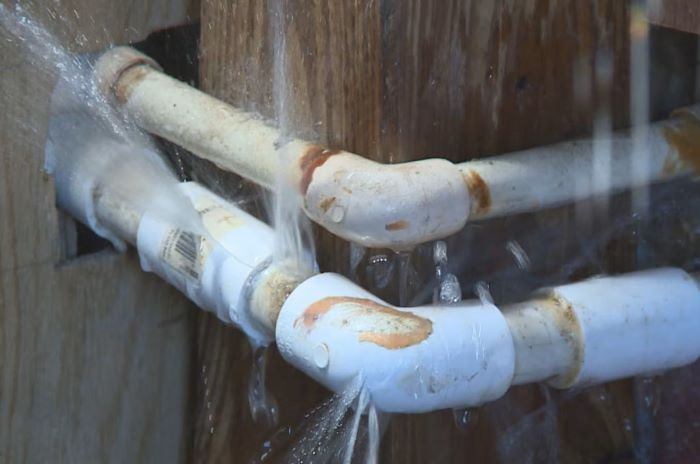 Frozen Pipes Prevention (Bessel): U.S. Patent No. 12,139,892
Frozen Pipes Prevention (Bessel): U.S. Patent No. 12,139,892
Frozen pipes are a common, expensive, and frustrating problem for homeowners, businesses, and other building owners. When winter comes, and temperatures drop, it is not uncommon for pipes in the walls and basements of buildings to freeze and burst, especially if the wind is blowing in just the right direction. There is also the problem of pipes freezing and bursting when the power goes out, and in trailers and motor homes in the off season. There is not just the plumbing bill to fix the burst pipes, there is also the water damage that has to be addressed. With all the annoyances we face, wouldn’t not worrying about frozen pipes be a welcome relief?
It would and it can be. This patent creates a device that prevents pipes from bursting. It resides inside a water line, and it prevents a copper, steel, or PVC pipe from bursting by releasing the pressure that builds up inside the pipe when water in the pipe freezes. In a typical structure, the piping throughout the building for both cold and hot water is interconnected. Should the water at any point in either the cold or hot water line freeze, it expands and creates significant pressure that needs to be released. If there is no release, the pressure will increase throughout the water line until the pipe bursts at one or more points. However, if the pressure can be released anywhere along the plumbing system, the likelihood of a pipe bursting is dramatically minimized. The device is installed in any existing water line, it requires no power, it does not impede water flow, and just one unit is needed for the hot water lines and one for the cold water lines in a small house. Two or more units might be needed in a larger residence or a larger structure like an office building, apartment complex, or hotel/motel. Further, the device can work several times without replacement to provide peace of mind over extended periods of time during the winter.
U.S. Patent No. 12,139,892 for a “Liquid diversion apparatus” will enable any manufacturer of plumbing supplies or water fixtures to offer its customer base a totally new solution to frozen pipes that is affordable and reliable.
 Next-Generation Sticky Note (Polacio): U.S. Patent No. 10,913,305
Next-Generation Sticky Note (Polacio): U.S. Patent No. 10,913,305
Introduced way back in 1977, the Post-it® note has become a fixture in America and around the world. They are used in businesses, schools, homes, factories, stores, and gas stations – basically everywhere! But Post-it notes have a few drawbacks. First of all, they can only be adhered to a surface just two or three times before they lose their stickiness. And they will only adhere to a perfectly flat and totally dry surface. The patent ran out years ago, so the original manufacturer, 3M, now has lots of competition. But after almost 50 years on the market, isn’t it time for the second-generation of sticky notes?
It is. This patent covers the next-generation of self-adhesive notes with a major improvement – they never lose their adhesive quality. An adhesive note based on this patent can be attached, detached, re-attached, detached, and re-attached endlessly. That reduces the cost of continually having to buy new sticky notes and makes it less likely for users to run out of them when needed. They are excellent for use in Kanban and similar planning and scheduling systems. And they can be produced in any color, shape, or size.
The patented technological improvement in these sticky notes is that they do not use an adhesive chemical to adhere to a surface, but use a network of tiny suction cups built into the stock. There is no adhesive chemical to wear off. Instead, tiny suction cups grab a hold of any surface so they can be used again and again. U.S. Patent No. 10,913,305 for a “Self-adhesive and reusable notes support” would enable any office products manufacturer to offer a product that is clearly superior to the sticky notes currently on the market!
Post-it is a registered trademark of 3M.
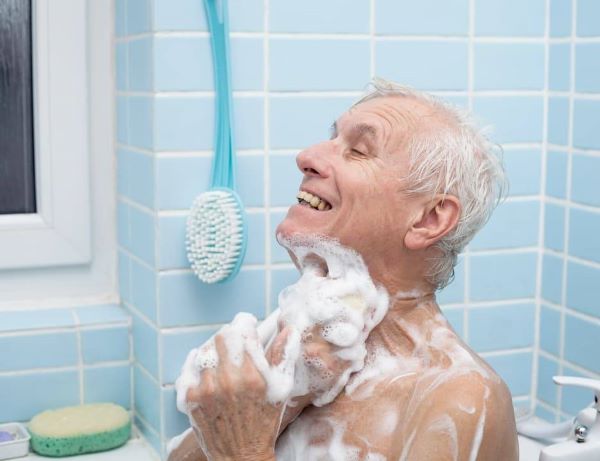 Foot Brush (Rushing): U.S. Patent No. 10,765,271
Foot Brush (Rushing): U.S. Patent No. 10,765,271
One of the downsides of living to a ripe old age is that everything gets harder to do, from climbing the stairs to tying shoes. There are 57 million Americans aged 65 or older, and it is the fastest growing segment of the population as the Baby Boomers age. Among the tasks that become increasingly more difficult for older folks is bathing. Bending down to wash one’s feet is increasingly more challenging as a person ages – and increasingly more dangerous, especially for the older American living alone.
This patent directly addresses that issue by creating a tool that enables older citizens – or those with disabilities – to more easily wash their feet and lower extremities. The device created by this patent has a handle for the user to hold, and a shaft that holds a cylindrical brush at its base. Without having to bend down – and potentially fall or lose one’s balance – the user can wash his or her feet including between the toes as well as the lower section of the legs. Like a back brush, it would be kept in the shower and used when needed, and tossed into a suitcase when the user travels. The brushes can be removed when they wear down and be easily replaced with new brushes. The tool created by this patent is easy-to-use, lightweight, durable, affordable, and practical.
U.S. Patent No. 10,765,271 for a “Sanitizing device with a removably attached brush component” would enable any manufacturer of household and personal products to create a new market segment with a patent-protected monopoly.
 Garage Storage System (Murphy): U.S. Patent No. 9,194,537
Garage Storage System (Murphy): U.S. Patent No. 9,194,537
We all somehow just do not have enough space for our “stuff!” That is why the storage facility industry is doing so well. As many a homebuilder has said, “No house has been built that has too many closets.” The most common collection place for all this stuff – from Christmas decorations to out-of-season clothing to books to files to toys the children have outgrown to many more items – is the garage. The result is we park our cars in the driveway, completely defeating the purpose of having a garage in the first place!
This patent provides a practical and affordable solutions. It consists of rails that are either bolted to – or hung from – the garage ceiling, and hooks hanging from the rails hold containers of whatever the homeowner wants to put in them. This invention takes advantage of space that is not currently being used – the space above the car and in front of the garage door tracks in the garage. The homeowner lifts up the boxes or bags of stuff and hooks them onto a rail, and they can be moved along the rails as needed. When the homeowner needs an item, he or she slides it to a convenient location on the rail and takes it down. The rail system makes it easy to put items into storage and to retrieve them when needed. A "switch track" portion of the system allows a homeowner with multiple sections of track to shuffle the bags around on the tracks as needed. Bags can also be lowered onto the roof of a homeowner's vehicle and strapped down, turning the storage bag into a roof top carrier. Then, upon return to the garage, the owner simply hooks up the bag, hoists it back to up toward the ceiling, and glides it along the rail back to its spot.
U.S. Patent No. 9,194,537 for a “System and method for storage” can be used by any manufacturer of shelving and storage systems to create and own a whole new market segment!
 Automatic Scented Candle Extinguisher (Easy Life Brands): U.S. Patent No. 10,544,938 and European Patent 3491291
Automatic Scented Candle Extinguisher (Easy Life Brands): U.S. Patent No. 10,544,938 and European Patent 3491291
Candles – especially scented candles – bring warmth, ambiance, and tradition to any setting, but they also pose a significant fire risk if left unattended. Every year, thousands of house fires are caused by forgotten or unattended candles, leading to property damage and personal injury – even loss of life. Traditional candle care relies on manually extinguishing the candle – which can be easily overlooked – especially during busy events, moments of relaxation, when called away from a room, or when retiring for the night.
This patent family creates a reliable and automated solution to this problem, ensuring that candle flames are extinguished safely and effectively. It has a built-in digital timer and self-closing lid, ensuring that candles are always extinguished at a time set by the user, eliminating the risk of accidental fires and allowing users to enjoy their candles with complete peace of mind. Its unique and innovative design makes the product created by this patent family the ultimate candle accessory for any setting. The timer on the unit can be set to any user-defined time for the lid to close and extinguish the flame. The product is designed to work with jarred and/or scented candles and it can be battery-powered or plugged in for continuous use.
U.S. Patent No. 10,544,938 and European Patent 3491291 can be used to create a dual-purpose product that enhances candle safety without sacrificing its aesthetic and aromatic appeal. A product based on this patent family can be marketed as a stand-alone product or as a premium accessory for existing candle jar manufacturers, opening multiple revenue streams and market penetration opportunities.
 Frozen Spigot Prevention (Tieszen): U.S. Patent No. 11,976,446
Frozen Spigot Prevention (Tieszen): U.S. Patent No. 11,976,446
Spigots on the outside of a house are super-convenient for watering the garden, washing the car, filling the pool, and washing the stoop, walkway, or driveway – or giving the kids a way to cool off on a hot day. That’s the good part. The downside is that the greatest enemy of an outside faucet or spigot is winter weather that freezes the water in the spigot, expanding and splitting the spigot open. The result is a mess and a large plumber bill. Most houses do not have an inside water shutoff for the outside faucet, so those homeowners have to rely on boots or covers that only provide limited protection from minor freezing over a short duration. And boots and covers only protect from wind and are not effective during any prolonged period of freezing temperatures.
This patent creates a solution. It is a device that screws into the spigot and provides just enough heat to prevent the water in the spigot from freezing. The unit plugs into an outdoor or indoor power outlet, or a battery, and uses just a trickle of electricity – less than what a night light uses. You will pay less for the electricity it uses than you will pay to have a plumber replace the spigot. And it totally eliminates a ton of worry and aggravation.
U.S. Patent No. 11,976,446 for a “Spigot freeze prevention apparatus and method” will enable any manufacturer of plumbing supplies to introduce and own a new market segment!
 Safe and Secure Infant Bedding (Gaudyn): U.S. Patent Nos. 9,968,205 and 10,758,067
Safe and Secure Infant Bedding (Gaudyn): U.S. Patent Nos. 9,968,205 and 10,758,067
Over 2,000 children a year die in the U.S. from Sudden Infant Death Syndrome (SIDS). Most deaths are in the fall, winter, and early spring. While physicians and scientists do not fully understand the cause of SIDS, there is a broad agreement that infants must sleep on their backs, NOT on their stomachs. Every parent who puts an infant to sleep does so with the fear of not knowing if that child will wake up.
This patent family addresses this issue by creating a bedding set for an infant that keeps the child warm and comfortable, but on his or her back! The set consists of a partially fitted sheet with a blanket attached to it that folds over the infant. The fitted sheet has hook-and-loop fasteners that hold the blanket so that when it is folder over, the hook-and-loop fasteners are mated to create a comfy pocket that secures the infant. The bedding set is designed to be used in a crib, the child is slightly elevated, and while he or she cannot roll over, the infant has freedom of movement.
U.S. Patent Nos. 9,968,205 and 10,758,067 for an “Infant sleeping bag, blanket and sheet” gives any bedding manufacturer the opportunity to introduce a secure infant bedding set for virtually every parent in America! The patent family also includes India Patent 468409.
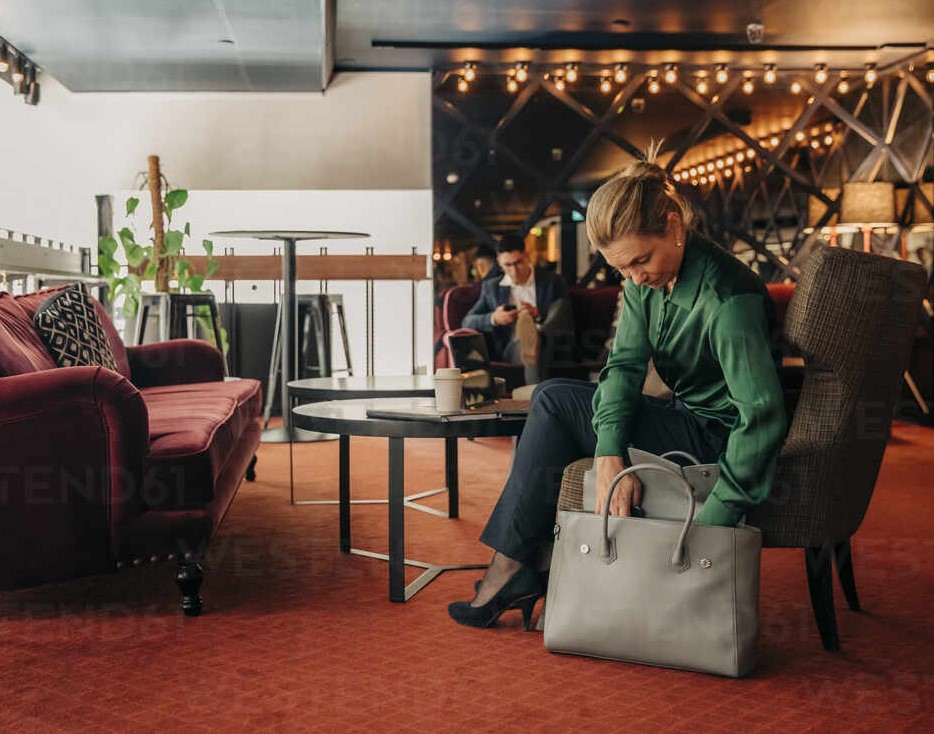 Quick-Release and Re-Attach Bag System (Parker): International Patent Portfolio
Quick-Release and Re-Attach Bag System (Parker): International Patent Portfolio
We all carry a lot of stuff with us, and that includes our wallets and smart phones. We often need a larger bag for our larger stuff, and a smaller bag for our smaller, but often more valuable, stuff. Many folks carry a pocketbook, backpack, or briefcase, and inside there is a wallet with credit cards and cash as well as a smart phone. When one needs to perform a financial transaction, he or she has to open the larger carryall and remove the smaller pouch that contains the smart phone, photo ID, credit cards, cash, and other items. And then, of course, once the transaction is completed, he or she has to remember to replace everything.
Shouldn’t there be an easier way to grab a wallet or smart phone? A faster way to access it when needed? There is. This patent portfolio creates a quick-release latch that enables an accessory bag or item to be securely attached to the exterior of a larger bag. The smaller item can be easily detached and reattached to the larger bag, or any other bag with the same latch system, in less than a second. The user releases the latch to free the attached item from the carrier bag to access it, then quickly and easily re-attaches the accessory to the side of the larger bag where it is held securely until needed again.
This is not the only application for this technology. It can be used by anyone who has to access a smaller bag or item on a regular basis. It could be used to attach a bag of golf balls and tees to a golf bag, to attach medical devices to a gurney for quick access by medical personnel, to attach a critical tool to a tool box or tool belt, to attach a pencil and crayon case to a child's backpack, to attach a water bottle to a bike or sports bag, to attach a diaper bag to luggage, and so on and so on. There are virtually unlimited applications for a latch assembly that can connect multiple bags and stationery items together, and mix or match detached accessories as needed for quick transitions, versatility, and on-the-go portability.
International Patent Portfolio
- U.S. Patent No. 11,553,765: Latch assembly
- U.S. Patent No. 11,786,022: Bag system
- European Patent 3824758: Bag system
- China Patent 12823690: Bag system
This portfolio includes an open continuation that will enable its acquirer to further modify the technology. This portfolio will enable any manufacturer of pocketbooks and wallets, attaché cases, brief cases, computer bags, backpacks, or dozens of other devices to add significant value and user convenience to their product lines.
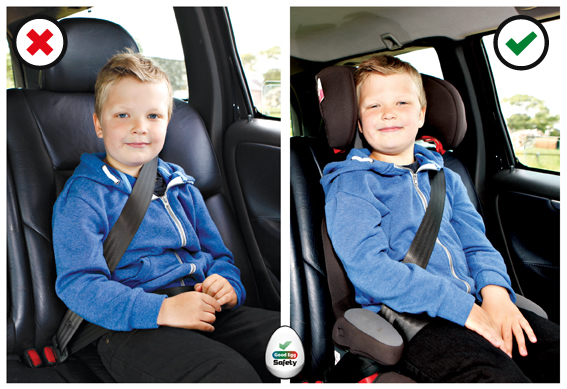 Height-Adjustable Child Car Seat (Chapman): Two U.S. Patents
Height-Adjustable Child Car Seat (Chapman): Two U.S. Patents
Car seats and seat belts save lives and reduce injuries. However, there is a special challenge when putting a seat belt on a child. It is very important that the seat belt cross the child’s chest and shoulder – not the child’s neck. A child that is too low in the seat will have a seat belt that is too high so it crosses over the child’s neck. In the event of a collision, the child could suffer severe neck and head injuries! So, as your child grows, how do you make sure he or she is correctly belted in?
This patent family addresses exactly that need. It creates a child booster car seat with a base that can be easily raised or lowered so the child is always at the proper height for the seat belt. This height adjustment can be manual or motorized. As the child grows, the parent gradually reduces the height of the booster seat until the child no longer needs it. And the adjustable booster seat can be easily lowered or raised for a second or third child. This patent family creates the perfect product to fill the gap between a child seat that includes belts to hold the child and the time when that child is tall enough that he or she can use the regular seat belt.
U.S. Patent Nos. 8,870,284 and 8,876,207 for an “Adjustable booster seat” would enable any car seat manufacturer to offer its customer base a new product to use when their children outgrow the car seat.
 Secure Lap Support for Infants (Hinderliter): Two U.S. Patent Family
Secure Lap Support for Infants (Hinderliter): Two U.S. Patent Family
Babies are just wonderful. They come out of womb complete with eyelashes and fingernails. Some are bald, but the hair grows in pretty quickly. They are, however, very fragile. As they learn their way around this crazy world into which they were born, they turn this way and that, crying when they are hungry or need to be changed. The one thing that none of us wants to do is drop a baby! But keeping an infant secure – while you need your hands for something else – is not always easy.
This patent family directly addresses that challenge by creating a device that holds an infant on an adult’s lap so he or she cannot roll off. It starts with a base that is a soft material that rests on the adult’s lap and directly under the baby. The base is secured with straps and quick-release buckles that secure the base to the adult’s legs. An additional strap keeps the baby from rolling off the platform. This device can be used as a portable changing platform in tight spaces or when no such surface is available. The device will enable its user to watch TV or talk on the phone or do a dozen other things with the baby right in front of him or her, safe and secure. When flying and holding an infant on your lap, this product will be indispensable!
U.S. Patent Nos. 8,375,491 and 10,849,439 for an “Infant lap support” will enable any baby products manufacturer to introduce a new market segment to the baby products sector. What a great gift for expectant parents and grandparents!
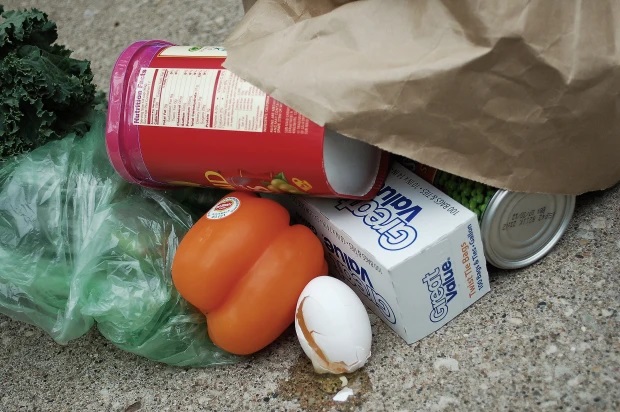 Combination Shopping Cart and Basket (Trasgate): U.S. Patent No. 11,046,343
Combination Shopping Cart and Basket (Trasgate): U.S. Patent No. 11,046,343
Shopping – especially grocery shopping – is not easy. For starters, more and more states are outlawing plastic grocery bags, so shoppers have to purchase re-usable grocery bags – and remember to bring them to the store! You load your groceries in a shopping cart, transfer them onto the check-out belt, put them into bags, put the loaded bags into a grocery cart, wheel the cart out to your car, unload each bag and put it in your car, drive home, carry all the bags of groceries into the house, and unpack them. Whew! And whether you buy a week’s supply of groceries or just pick up a few items, the process is the same.
This patent creates a combination basket and cart that is super convenient. It has legs with wheels that fold up when not in use and drop down when you need them, and a carrying handle that folds up when you need it and down when you do not. With the legs folded up, it can be carried by its fold-up handle, and can be easily placed on a belt, table, or counter, or in the truck or wayback of an SUV. The legs drop down to provide easy transport of the basket through a store, across a parking lot, or up a driveway. A product based on this patent could be sold by stores to their customers just as re-usable grocery bags are, or they can be sold by third parties to shoppers who are looking for added convenience. It would be an especially useful product for young adults and senior citizens who just buy a few items when they go grocery shopping.
U.S. Patent No. 11,046,343 for a “Device for transporting items” would enable a manufacturer of plastic and metal products to offer a highly convenient product to a broad cross section of the populace!
 High-Rise Building Emergency Escape Parachute (Liao): International Patent Portfolio
High-Rise Building Emergency Escape Parachute (Liao): International Patent Portfolio
Buildings are getting taller and taller. There are now 21 buildings that are 100 floors or more! We learned a tragic lesson on September 11 – just how deadly a high-rise office building can be. A fire can trap thousands of people and result in thousands of deaths.
This international patent portfolio creates a totally out-of-the-box solution for safely escaping from a high-rise building. It creates a parachute that has double layers – one filled with helium – that will reliably and gently take its passenger from the floor of any building to the ground. It has an air flow guiding round nose while a second outer layer traps the up-rising airflow into the outer canopy of the parachute to control the speed of descent. A worker or resident in a high-rise building would buy this product and keep it in his or her office or apartment should it ever be needed. In the event of a fire or other disaster, the employee or resident would strap on the parachute and jump off a balcony or out a window. The device will automatically fill with air to slow the descent and remain upright until the parachutist reaches the ground.
Patent Portfolio
- U.S. Patent No. 10,081,430: Coaxial double layer parachute
- European Patent 3296209: Coaxial two-layered parachute
- China Patent 106184771: Coaxial two-layer parachute
- Japan Patent 6413029: Coaxial two-layer parachute
- Korea Patent 101983931: Coaxial two-layered parachute
- Australia Patent 2016259495: Coaxial two-layered parachute
- Canada Patent 2983044: Coaxial two-layered parachute
- Russia Patent 2678382: Coaxial double layer parachute
- Taiwan Patent 201404664: Parachute
- Singapore Patent Application 11201708611: Coaxial two-layered parachute
- Saudi Arabia Patent Application 517390247: Coaxial two-layered parachute
- India Patent Application 2014CH00094: Parachute
This portfolio, or select patents from the portfolio, can be used to create a product for workers or residents in high-rise buildings that will absolutely save lives! They can be individually purchased by those who work or live in high-rise buildings, or supplied to employees or tenants of the building by their employers or building management.
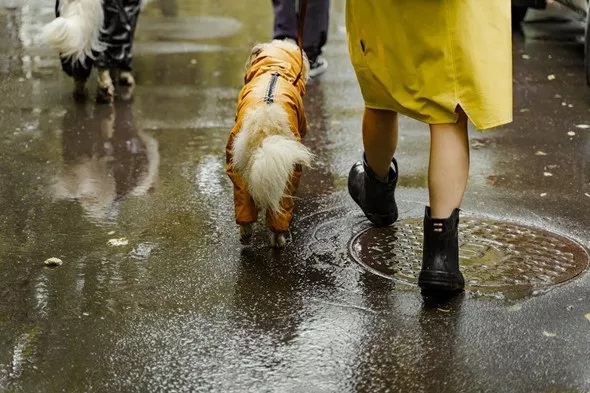 Size-Adjustable Dog and Cat Boot (Goldberg): U.S. Patent No. 10,856,526
Size-Adjustable Dog and Cat Boot (Goldberg): U.S. Patent No. 10,856,526
The dog, it is said, is “Man’s best friend.” In reality, dog owners love their dogs and cat owners love their cats. Dogs and cats are members of the family. They eat with us, sleep with us, go on vacation with us, and go on walks with us. While on those walks, some pet owners want to protect their pet’s feet from salt, chemicals, and other contaminants they will come in contact with on neighborhood streets and roads. But what is missing from the market at current is boots for a pet that adjust to the size of the cat or dog’s feet. Just as we want our shoes to fit correctly, we want our pets to have boots that fit correctly.
This patent creates a boot for a cat or dog that is size-adjustable. A series of loop-and-hook fastening straps hold the boot securely around the pet’s foot and a second strap holds the boot around the pet’s ankle so it does not slide off. The boots easily slide on over the pet’s foot, and the straps are then tightened to hold the boot snuggly. When the walk is over, the straps are released and the boots easily slide off. Your dog will give that “Gee, I’m so lucky to have you as my owner” look while your cat will give you that “I’m not impressed” look.
U.S. Patent No. 10,856,526 for a “Size-adjustable animal paw boot and method for donning” will give any manufacturer of pet supplies the opportunity to offer the first boot for pets that adjusts to the pet’s foot, stays on while on walks, and is easily slipped on and slipped off.
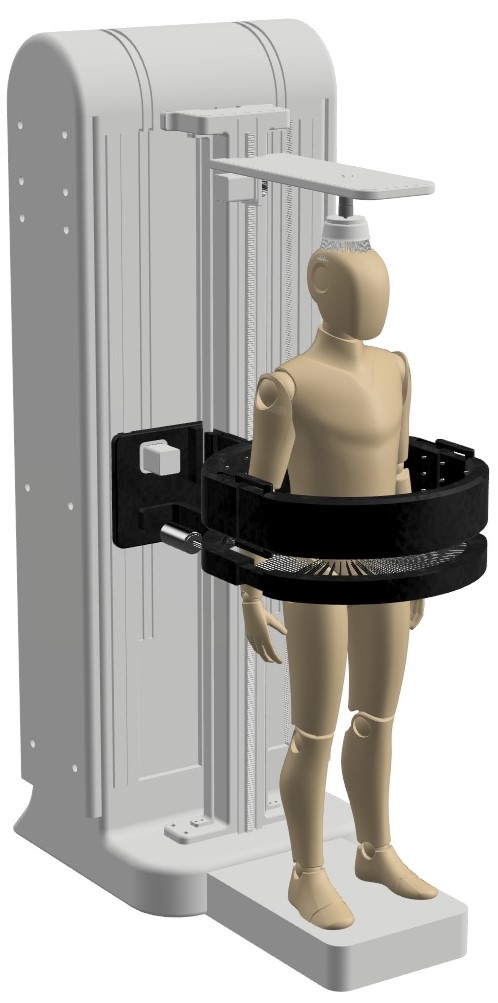 360-Degree Shower and Dryer (Gadde): U.S. Patent Nos. 11,375,857 and 11,70,0977
360-Degree Shower and Dryer (Gadde): U.S. Patent Nos. 11,375,857 and 11,70,0977
The modern shower was invented in 1767 by William Feetham. Showers came into wide usage during the Civil War when the Union Army provided portable showers for soldiers in the field. Over the last century, showers have become more sophisticated and ornate. Showerheads now offer multiple spray patterns, and some shower stalls feature multiple shower heads. The latest innovation is the digital shower.
This patent family takes the shower to a new level of performance. Rather than one or even several shower heads, this patent family creates the first 360-degree shower that sprays water at the bather from all sides at the same time. A wrap-around 360-degree spray of water is mounted on a ring that raises up and down, spraying water at the bather from top to bottom (or bottom to top). A combination of brushes can be added for a total cleaning experience. It can also blow air to thoroughly and quickly dry the body! For the person who wants a quick in-and-out shower, or the elderly or disabled who need assistance, or for washing children, this shower is a real-world solution. It offers the clientele at gyms, health clubs, spas, and hotels a premium showering experience, and will enable hospitals, nursing homes, and elder-care facilities to provide an improved shower for its patients.
A faster shower uses less water and less energy to heat the water, saving valuable resources. Automated post-shower tasks such as drying the body, applying moisturizers, or administering medicated ointments, can be done by this device, reducing labor costs for the healthcare facility. Waterless UV sanitizing can be used to kill bacteria, mold, fungi, and viruses for subjects that have been exposed to such contaminants.
U.S. Patent No. 11,375,857 and U.S. Patent No. 11,700,977 for an “Automatic system for providing full body shower to a user” would enable any shower manufacturer to leapfrog the technology of all of its competitors and offer the next-generation in shower luxury and performance!
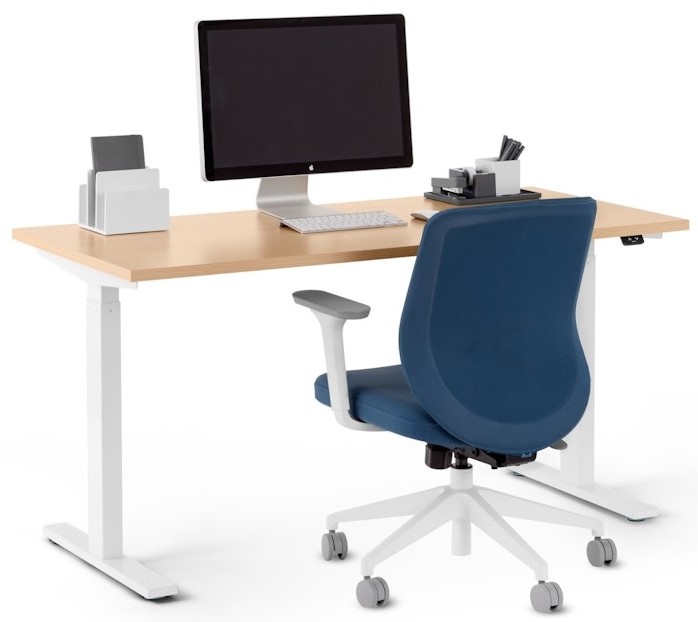 Control Module Sliding Mount (Ugapo): U.S. Patent No. 11,291,300
Control Module Sliding Mount (Ugapo): U.S. Patent No. 11,291,300
Adjustable-height desks are growing in popularity. In fact, they are the fastest-growing segment of the desk market. Being able to work standing, and to adjust the desk to the most comfortable height for the user, has many benefits including less back pain, increased mobility and alertness, and elimination of the problem of limbs “falling asleep” on the user. The height-adjustable desk does, however, come with one drawback. The desk comes with a height-adjustment control unit that is never in the right location!
This patent fixes that problem by creating a track that holds the control unit and enables it to be slid to the most convention position for the adjustable-height desk user. A right-hand user will want it on the right, while a leftie will want it on the left. There is also the issue of where the monitor, keyboard, mouse, telephone, and other items will be on the desk, and where the power and network cables are. The device created by this patent enables the desk user to place the control unit in the most convenient position. And when the desk is assigned to another employee, that employee can quickly and easily move the control unit to the most convenient position for him or her.
U.S. Patent No. 11,291,300 for a “Sliding control mount assembly” would enable any manufacturer of height-adjustable desks to offer its customer base a more user-friendly desk that is clearly superior to what is offered by the competition.
 Carbon Dioxide Sequestration Filters (Gerlach): U.S. Patent No. 11,426,695
Carbon Dioxide Sequestration Filters (Gerlach): U.S. Patent No. 11,426,695
There is a price we pay for our modern conveniences. Atmospheric carbon dioxide (CO2) levels have been rising since the Industrial Revolution as fossil fuel use continues to grow. In response to increased carbon dioxide levels, governments around the world have committed to Carbon Dioxide Removal (CDR) programs that involve large-scale and expensive operations at industrial sites. However, this is a way that every homeowner and business can contribute to reducing carbon dioxide levels.
This patent offers a passive carbon dioxide reduction solution that can be used at the residential and commercial level. It addresses this problem by creating filters that adsorb and remove carbon dioxide from the air as it passed through them. An olivine, fayalite, forsterite, or serpentine silicate mineral is combined with the fiber of the filter, and as CO2 passes through the filter, it is adsorbed by the silicate additive. This patented technology is ideally suited for HVAC filters in residential, commercial, and industrial facilities, as well as other filtered environments such as home air purifiers, health care facilities, clean rooms, computer centers, and laboratories. When the filters are disposed of, the carbon extracted from the carbon dioxide is returned to nature.
U.S. Patent No. 11,426,695 for “Media and air filters for carbon dioxide sequestration” would enable any filter manufacturer to add value to its product line and create a new market segment. Many consumers and businesses – given the option to buy filters that help reduce CO2 levels – will choose filters based on this patent!
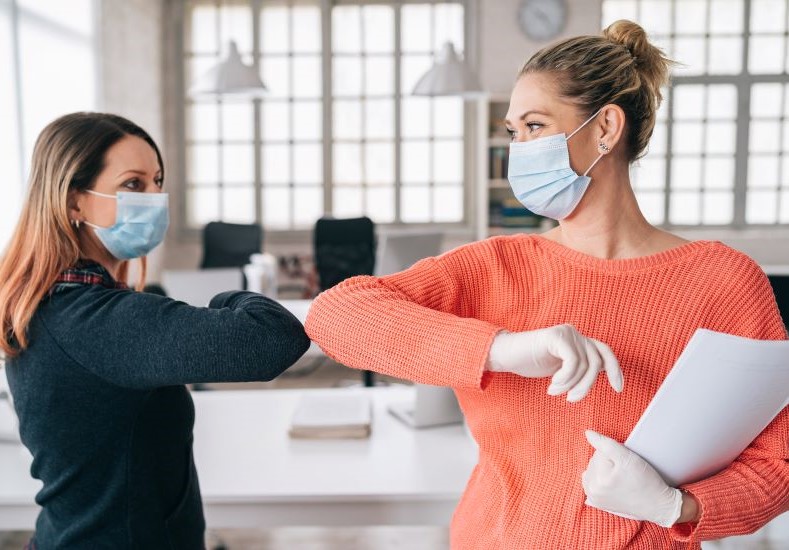 Fashionable and Convenient Face Mask (Jackson-Gannon): U.S. Patent No. 11,484,733
Fashionable and Convenient Face Mask (Jackson-Gannon): U.S. Patent No. 11,484,733
Wearing a face mask has, unfortunately, become an increasingly common and sometimes necessary event. In addition to the fact that they are not very comfortable, they are not attractive either. And you can never seem to find your mask when you need it. Wouldn’t it be a better world if face masks were comfortable and attractive, and they never got lost?
This patent addresses exactly that need. It creates a face mask that is made from fabric, so it is much more comfortable than the sterile paper and plastic masks currently in use. The mask is also attractive thanks to the fabric – not paper or plastic – that is used to construct it. In fact, you can own several masks in different colors so you will always have one that coordinates with what you are wearing. Best of all, the mask folds up and becomes a pendant that hangs from your neck – so you always have your mask when you need it. If we have to wear these masks, let’s at least make them as comfortable, attractive, and convenient as possible. The pendant may include beading, logos, initials, and other decorative features.
U.S. Patent No. 11,484,733 for a “Pendant face mask” would enable any clothing or accessories manufacturer to offer face masks that are not only comfortable and attractive, but they never get lost!
 Tool for Retrieving Dropped Metal Objects (Collard): U.S. Patent No. 11,484,992
Tool for Retrieving Dropped Metal Objects (Collard): U.S. Patent No. 11,484,992
We’ve all been there. A nut, bolt, washer, screw, paper clip, scissors, screwdriver, wrench, or other item slips out of our hand and drops down into a location where we cannot reach it. Arrrggg! This problem is especially common today for auto mechanics because the engine, alternator, AC compressor, water pump, and other components are crammed under the hood of today’s cars with no room to reach down and retrieve something. How do we retrieve that dropped item?
This patent creates a tool for exactly that purpose. It has a flexible arm so it can be maneuvered through tight spaces and a magnetized head that will attract any magnetic metal object. The magnetized head has a through hole so it can, for example, be slid over a bolt to remove or place a washer or nut. Several products in different sizes and configurations can be made from this patent, creating products that every auto repair, aircraft maintenance, and machine shop will want to have in its tool kit. It will also be a practical tool for the home, office, warehouse, or factory. Any item made of iron, nickel, or cobalt – or steel, stainless steel, or any other alloy containing these metals – can be retrieved with this tool.
U.S. Patent No. 11,484,992 for a “Tool for retrieving magnetic objects” will enable any tool manufacturer to add a highly useful and practical tool to its product line.
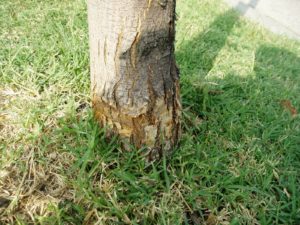 Tree Trunk Protection (Lolio): U.S. Patent No. 9,890,536
Tree Trunk Protection (Lolio): U.S. Patent No. 9,890,536
We all love trees. They are quiet and majestic. They provide shade and elegance. In addition to their beauty, they pull cardon dioxide out of the air and return oxygen for us to breath. A tree is the original “green” product! Ironically, the only serious enemy a tree has is not from nature – it is the lawnmower and edger! There must be a way to protect our trees from the lawnmowers that bump into them and damage the trunk, and the over-active edgers that strip off bark.
The solution is a patented trunk guard that wraps around the base of a tree or shrub and protects it from damage. Mechanical fasteners hold the trunk guard together so it can adjust for any diameter trunk. For trees with larger trunks, two or more units can be linked together to provide 360⁰ protection. Additionally, there are spaced bosses that maintain an air space between the surface of the tree trunk and the trunk guard ensuring the health of the tree or shrub.
U.S. Patent No. 9,890,536 for a “Silicone rubber universal fit flexible tree trunk guard” would enable any garden products manufacturer to offer a product that provides real value to homeowners and property managers.
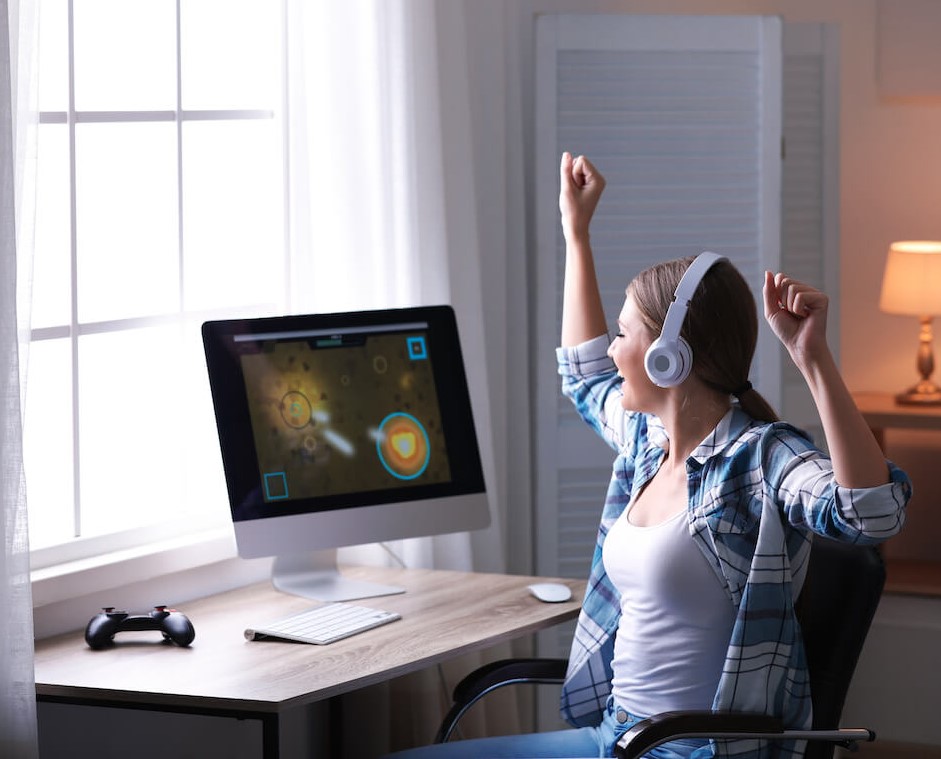 Pop-Up/Collapsible Gaming/PC Workstation (Werxco): International Patent Portfolio
Pop-Up/Collapsible Gaming/PC Workstation (Werxco): International Patent Portfolio
Space is tight today. Many gamers, students, and at-home workers do not all have a permanent place where they can play their videogames, do their homework, or work from home. Using a table for your videogame or PC puts the unit at the wrong height, but many folks do not have room for a dedicated desk. Until now.
This portfolio creates a unique state-of-the-art workstation that is ideal for gaming or working on a PC or laptop where a large screen is required. A key unique feature is that the user’s computer screen remains securely fixed and connected at all times, even when stowed away. Within seconds, it folds to a flat, vertical form on rollers that uses up very little floor space, so it can be rolled out when needed and rolled back into storage when not in use. Since it occupies little floor space, it can be stored in a closet, behind a sofa, or in any unused space. When the workstation is put into use, the work surface folds out and down, and a support rises up to support the display. This patented invention creates a practical solution for schools, universities, gamers, apartment dwellers, students in dormitories, or any PC user that has limited space.
The portfolio consists of U.S. Patent No. 11,457,726; Australian Patent 2021104938; and PCT Patent Application 2021237302 for “Stowable workstations” and would be a critical acquisition for any office or computer furniture manufacturer. The acquirer can use the open PCT Patent Application to apply for additional national patents.
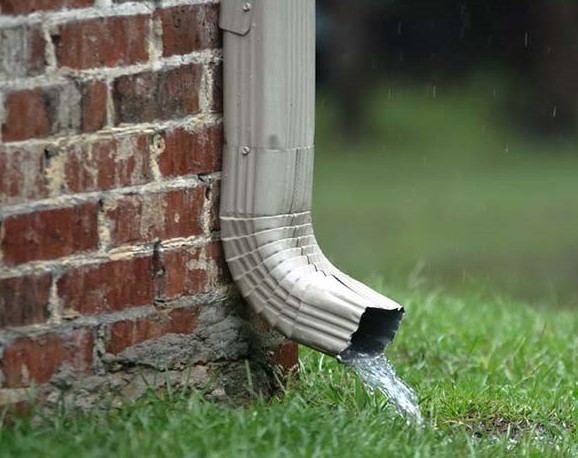 Water-Diverting Downspout Extension (Lolio): U.S. Patents 9,598,868
Water-Diverting Downspout Extension (Lolio): U.S. Patents 9,598,868
Water or dampness in the basement is a common problem for any homeowner who has a basement. While run-off from rain and melting snow are contributory to water in the basement, much of the water that ends up in the basement came off the roof of the house! The gutters catch the rain and direct it into downspouts that dump the water right against the walls of the foundation and that water seeps into the basement. Not good. The roof water coming down those downspouts needs to be directed away from the foundation so it does not end up into the basement.
This patent directly addresses that need. It creates a flexible silicone rubber extension that fits snuggly over the bottom of the downspout. It directs the water away from the foundation so it does not end up in the basement. It is rugged enough that it will not be chewed up by the edger when the lawn is mowed and edged. It is a major improvement over the current generation of downspout extensions that are made from a rigid plastic that makes them difficult to fit over the bottom of the downspout and easily knocked loose by a lawnmower, edger, pet, children, or anything else that bumps into them. The product created by this patent is easy-to-install, practical, reliable, durable, effective, and affordable.
U.S. Patent No. 9,598,868 for a “Water diverting silicone rubber universal fit downspout extension” will enable any household accessories manufacturer to offer a practical solution to keeping rainwater out of the basement.
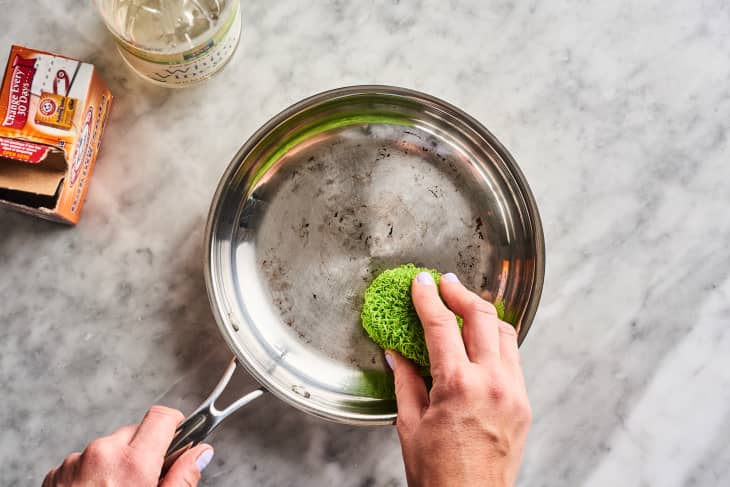 Sponge with Scrubber Insert (Stirworks): U.S. Patent 10,986,979
Sponge with Scrubber Insert (Stirworks): U.S. Patent 10,986,979
When washing dishes, pots, and pans, most people use a sponge. But sometimes you need a little more friction – more abrasion that will clean off cooked-on food and hard-to-remove material. You can put down the sponge, and switch to a scrub pad, but that switching back and forth is inconvenient, and it makes doing what is already a very unpopular task take even longer. Why can’t you have a sponge when you need a sponge, and an abrasive pad when you need more scrubbing power, without switching back and forth between two products?
You can. This patent covers a sponge that includes an abrasive pad. When you are washing a dish or bowl or pot or pan, and you come across an area that needs to be scrubbed, you push down on the upper side of the sponge, and the abrasive pad that is inserted in the sponge is pushed down to provide the abrasion needed to clean off whatever the sponge itself will not remove. The action of pushing down on the top of the sponge becomes intuitive for the user. When the sponge is not removing baked-on material, the instinct is to push down on the sponge. But rather than just using the sponge to clean, the abrasive section comes down and scrubs away the baked-on material. No more switching from sponge to scrubber to sponge to scrubber to sponge!
U.S. Patent No. 10,986,979 for a “Scrub sponge with selectively accessible abrasive region” will enable any manufacturer of kitchen cleaning products to offer the next generation in sponges, creating and owning a new market segment.
 On-the-Go Toothbrushing (Chavez): U.S. Patent No. 11,278,109
On-the-Go Toothbrushing (Chavez): U.S. Patent No. 11,278,109
We’ve all found ourselves wishing we had a toothbrush and toothpaste so we could pop into the closest restroom and brush our teeth. You had corn-on-the-cob, or barbeque, or any spicy or garlicky food for lunch, and you really don’t want to go into that afternoon meeting with the remnants of that very tasty lunch in your mouth and on your breath. Those tacos for breakfast were great, but what about the people at work you have to talk to? Or you just had an especially tasteful dinner and you don’t want your breath to knock out your date just when things get romantic. There has to be a way to quickly, conveniently, and effectively clean your teeth anywhere at any time. Chewing gum and mints help, but just a little bit, and not for very long, so they are far from solving the problem.
This patent has solved this dilemma by creating a small, bristled device impregnated with an antibacterial solution that you pop into your mouth. As you chew on it, the bristles knock loose the food debris clinging to your teeth or stuck between them, and the solution gets rid of bad-breath-causing bacteria. It may include luffa sponges, water-soluble films, or spheres with small amounts of mouth wash to aid the cleaning process. It can also have channels that, when they are bent, create a vacuum that holds the device tightly to the tongue so the user can direct it around the inside of his or her mouth. After the user has gently chewed on the device and circulated it around the inside of his or her mouth, and the mouth feels clean and fresh, he spits out the device and disposes of it as one would dispose of chewing gum. If the device includes mouthwash, the user can quickly rinse his or her mouth to get rid of any mouthwash residue. The product based on this patent would come in a blister pack or bag that you purchase and keep in your pocket, pocketbook, car, desk, or wherever it is handy so they are available when needed.
U.S. Patent No. 11,278,109 for a “Disposable device for oral hygiene” would enable any oral hygiene products manufacturer to both create and own a totally new market segment!
![]() Preventing Electric Shock Drowning (Fournier): U.S. Patent No. 9,880,117
Preventing Electric Shock Drowning (Fournier): U.S. Patent No. 9,880,117
Thousands of Americans die every year from electric shock drowning. They went for a swim only to find that there was a deadly electric current running through the water. Milder electrical current in water causes skeletal muscular paralysis, so the victim cannot move or call for help and drowns. Stronger electrical current can actually electrocute the swimmer. Electrical current in water can come from several sources. In swimming pools, it comes from filtration equipment and lighting that is not properly grounded. In fresh water, it comes from electrical devices in boats and on docks. As a result, marinas often have electrical current running through the water. Electrical current in any body of water from a swimming pool to a lake to the ocean is totally invisible. Just two volts of AC electricity over a span of one foot in water can be lethal. And it can only be detected once a person is immersed in the water – and then it’s too late!
This patent addresses this issue head on by creating a device that detects electrical properties in water or any other liquid. It includes a probe that is dropped into the water, and it immediately detects if electrical voltage is present and displays the amount of current. The device is insulated to protect the user from shock or electrocution up to 600 volts. The device requires no power supply of its own, so it can be used anywhere at any time when needed.
U.S. Patent No. 9,880,117 for a “Measuring instrument for detection of electrical properties in a liquid” would be a strategic acquisition for any manufacturer of electrical measuring equipment or products for the nautical, boating, safety, or swimming pool markets. It would also create a device that would be essential equipment for every fire truck, ambulance, and rescue vehicle. A product based on this patent will create a totally new market segment for the acquirer of the patent.
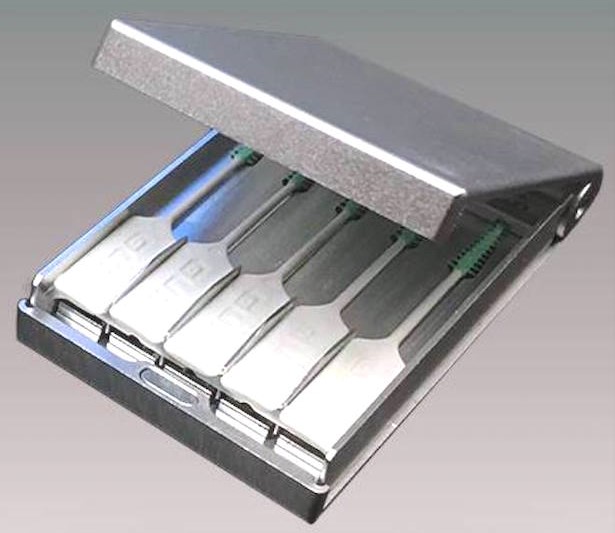 Convenient Solution for Dispensing Dental Picks (HeyNow): International Patent Portfolio
Convenient Solution for Dispensing Dental Picks (HeyNow): International Patent Portfolio
The most recent and successful innovation for interdental cleaning between our teeth is the disposable plastic dental pick with rubber bristles. It is ideal for removing food particles after meals, removing plaque, orthodontic cleaning, and as an alternative to flossing. The dental pick market is growing with billions of units sold annually. But it is a highly competitive market segment with little product differentiation.
Dental picks are sold both retail and online, and the typical package includes 40 or 50 or more picks plus a simple storage case that holds five or more picks. However, it is not convenient to get each pick to the job site – into the mouth – because customers need to remove a sheet of picks, break one pick off, then put the sheet back into the case. Not good. What dental pick users really need to enhance their picking experience is a durable, multi-function storage case that organizes the connected picks, separates them (ideally all at once in a single, easy step), and dispenses each pick with ease – anytime, anywhere, when needed.
Patent Portfolio
- U.S. Patent No. 9,259,303: Dental pick container and dispenser
- U.S. Patent No. 9,655,703: Dental pick container and dispenser
- U.S. Patent No. 9,763,761: Dental pick container and dispenser
- U.S. Patent No. 10,080,635: Dental pick container and dispenser
- European Patent 2956383: Dental pick container and dispenser (valid in 13 countries)
- Chinese Patent 107713634: Toothpick container and dispenser
- Chinese Patent 105050914: Toothpick container and dispenser
- Japanese Patent 6337023: Dental pick container and feeder
This portfolio creates an accessory product for the dental pick market, giving the acquirer of the portfolio a distinct competitive advantage in terms of product differentiation, customer loyalty, innovation, and user convenience. The portfolio covers four different product embodiments that can be sold as a product differentiator, a premium or added-value upgrade, or an aftermarket product sold online.
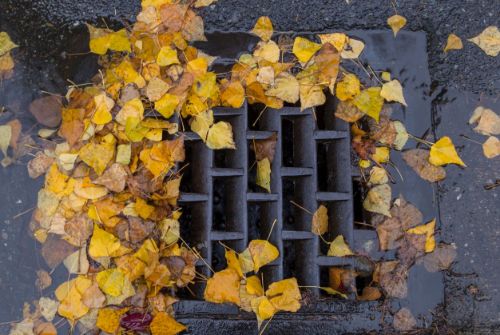 Floor Drain Debris Filter (Hebert): U.S. Patent No. 8,679,328
Floor Drain Debris Filter (Hebert): U.S. Patent No. 8,679,328
It is a common site after heavy rain. Storm drains are clogged with leaves, branches, and other debris, totally defeating their purpose. The same thing happens to the floor drains at the bottom of stairs or a driveway going into a basement. Leaves and other debris build up on the grate, clog the drain, and the water that was supposed to be collected by the drain ends up in the basement, defeating the original purpose of the drain and making a mess.
The invention covered by this patent fixes that problem by creating a cover that goes over the drain. It catches leaves, trash, and other debris and holds it suspended over the grate of the drain, so the water falls through and is carried away. No flooded basement because debris clogged the floor drain. The patent describes a one-piece device that includes parallel vertical chambers with cross members. The vertical chambers create space between the cross members so debris is captured while the water (or other liquids) flows through to the drain. The device can be removed, cleaned off, and replaced as needed.
U.S. Patent No. 8,679,328 for a “Floor drain cover” would be a valuable acquisition for any supplier of safety flooring products, plumbing supplies, or other DYI products for the home.
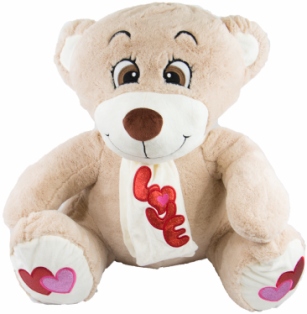
 Body-Inflatable Doll (iPlush): U.S. Patent No. 6,960,113
Body-Inflatable Doll (iPlush): U.S. Patent No. 6,960,113
There are inflatable dolls in which the entire doll – including the arms, legs, and other appendages – are inflated at the same time. They are essentially a large balloon. Then there are stuffed dolls in which the insides of the doll are filled with a soft and flexible mass at the factory. Inflatable dolls lack the soft touch and feel of stuffed dolls, but they are cheaper to ship and store. Stuffed dollars are warm and fuzzy, but are expensive to store and ship. This patent creates a solution. It creates a warm and fuzzy doll that is shipped flat to save on space and costs. Just the body of the doll – not the arms, legs, and appendages – are inflated to create a large, lovable, doll or toy of any size, shape, configuration, or theme.
U.S. Patent No. 6,960,113 for an “Inflatable plush toy” is currently being used to create just such a line of inflatable dolls and toys. Two Claim Charts are available upon request that illustrate evidence-of-use by a national retailer and a major importer of children’s toys.
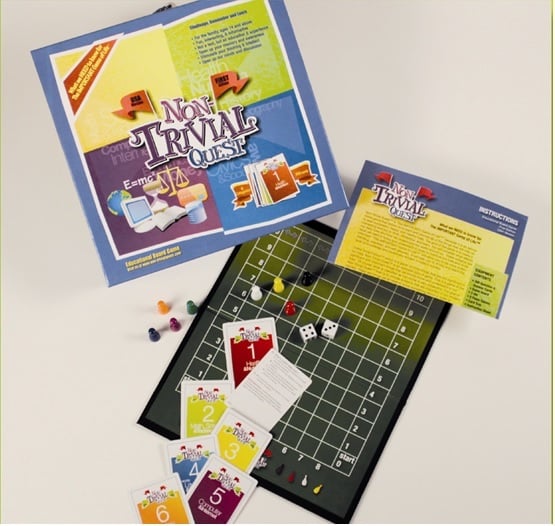 Non-Trivia Board Game (Arduini): U.S. Patent No. 8,985,583
Non-Trivia Board Game (Arduini): U.S. Patent No. 8,985,583
Money Magazine ranks Trivial Pursuit as the seventh best-selling board game of all time. This patent creates a board game that is the alter-ego of Trivial Pursuit and that could become its major competitor. This patent describes a “non-trivia” board game in which the questions are not about pop culture, but about everyday stuff that each of us needs to know. The question cards include hidden answers that can be viewed through a polarized filter that slides over the card. The game includes different sets of rules that determine the speed of the game, its difficulty, how many dice are used, use of different tokens, and different playing lanes on the board. The patent includes a card container with finger wells for cards, and a detailed description of the answer to each question is provided so players can gain depth of knowledge and greater understanding of the subjects covered by the game, and stimulate more interest in, and understanding of, the subject!
In addition to U.S. Patent No. 8,985,583 for a “Non-trivia game and method of play,” the U.S. Trademark for Non-Trivia Quest® and other IP is also available for acquisition. The company that acquires this patent and trademark will have an exciting new board game that is ready to go to market!
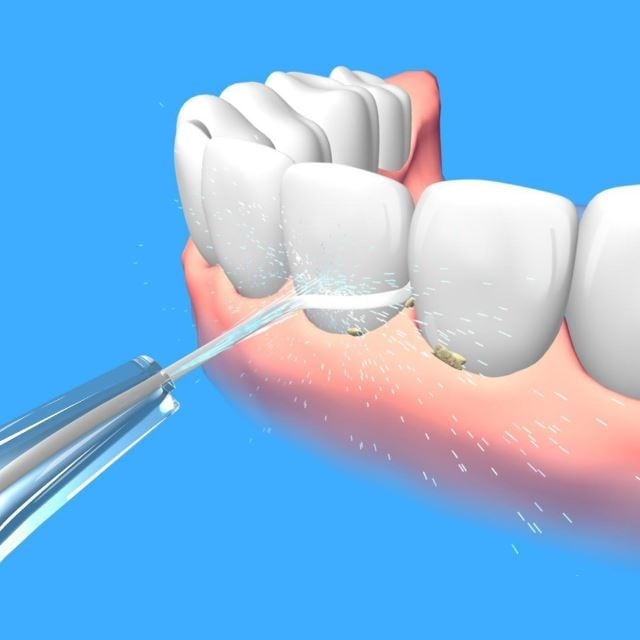 Water Pick/Flosser that You Just Pick Up and Use (Zhang): U.S. Patent No. 10,064,710
Water Pick/Flosser that You Just Pick Up and Use (Zhang): U.S. Patent No. 10,064,710
We have to floss. We all get it. And using a water pick to floss and clean between your teeth is very effective and contributes to dental health. No argument. But setting up all that equipment? You have to find a place to put it, fill the tank with water, and then find a place to plug it in. Once you are done, you have to empty the tank, unplug it, and put it away. Really? Who has time for that?
Someone should invent a water pick that you just pick up and use. NO tank to fill and then have to empty. NO device to find a place for, and then find a place to plug it in. NO equipment to have to put away when you are done. Someone ought to invent an effective and affordable water pick and flossing tool that you just pick up like a toothbrush, use it to clean thoroughly between your teeth and gums, and then just put it back when you are done so you can go on about your busy life! Why doesn’t someone invent something like that?
Someone did! U.S. Patent No. 10,064,710 for an "Oral Hygiene Apparatus" creates a tooth-flossing tool that attaches to the water line coming into your bathroom sink. You just pick it up and use it. And when you are done, you put it back and walk away! Nothing to make room for in your bathroom. No tank to fill. No tank to empty. Nothing to plug in. Nothing to unplug! No batteries to replace. No machine to put away when you are done! Based on the technology behind the spray attachment on a kitchen sink, this water pick and flossing tool uses the water pressure going into the bathroom sink to create a powerful jet spray that cleans between your teeth and gums. Just pick it up and use it as you would your toothbrush. And put it away when you’re done!
The invention can be configured with multiple heads for multiple users, or it can be configured to have multiple units at a single sink. This patent would be a critical acquisition for any oral hygiene products manufacturer looking to create and own a new market segment, or an opportunity for any bathroom fixtures company to create and own a new bathroom sink product line!
Patent Brokerage Prospectus: Contact [email protected] to receive an analysis of each portfolio that includes:
- Executive Summary
- Patent Overview and History
- Technology and Investment Summary
- Market Research
- Company Analysis
- Illustrative Evidence of Use (if applicable)
We offer patents in these technologies:
- Agricultural
- Artificial Intelligence
- Automotive/Vehicular
- Aviation
- Banking/Financial Services
- Beverages/Foods/Nutritional Products
- Boat and Marine
- Cannabis and Medical Marijuana
- Construction/Building Trades
- Consumer Electronics
- Consumer Products
- Digital Currency/Cryptocurrency
- Drones/UAVs
- E-Cigarette & Vaping Technology
- E-Commerce
- Education & Training
- Energy/Power Generation
- Health and Beauty Products (HBP)
- IoT Patents/Internet of Things
- Manufacturing
- Medical Electronics and Devices
- Mining/Drilling
- Mobile/Wireless
- Network/Location-Based Services
- Optics/Displays/Video/LED
- OTT Patents/Over-the-Top
- Packaging
- PCs and Notebooks
- Pharmaceuticals
- Robotics/Automation
- Semiconductor
- Shoe & Apparel
- Smart Home/Smart Office
- Social Media
- Software, Apps, and Architecture
- Sports/Sporting Goods
- Telecommunications/IP Telephony
- Warehousing/Material Handling
- Other
- Go to Patent Index
- Return to Patent MarketPlace

